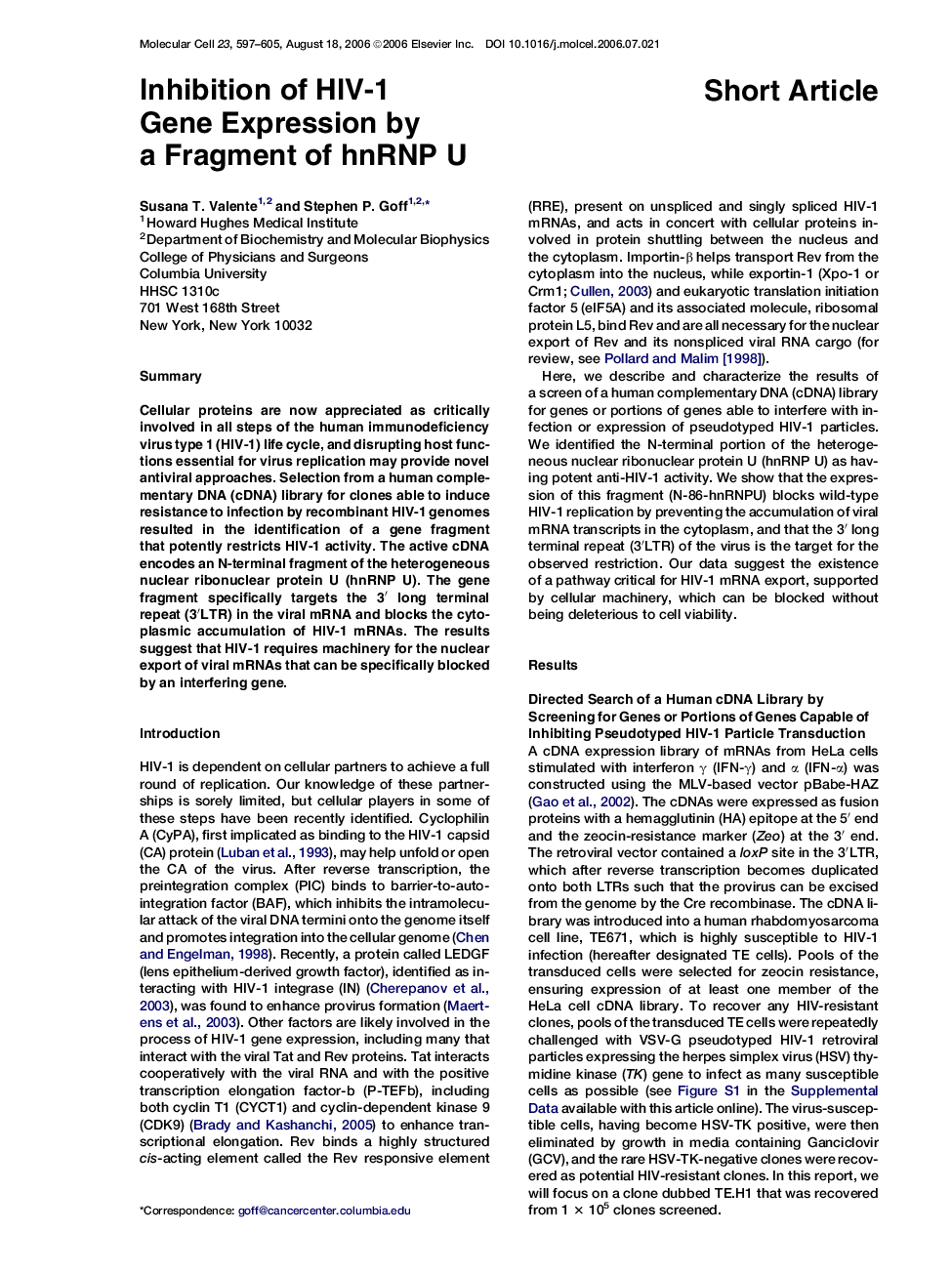| Article ID | Journal | Published Year | Pages | File Type |
|---|---|---|---|---|
| 1998052 | Molecular Cell | 2006 | 9 Pages |
SummaryCellular proteins are now appreciated as critically involved in all steps of the human immunodeficiency virus type 1 (HIV-1) life cycle, and disrupting host functions essential for virus replication may provide novel antiviral approaches. Selection from a human complementary DNA (cDNA) library for clones able to induce resistance to infection by recombinant HIV-1 genomes resulted in the identification of a gene fragment that potently restricts HIV-1 activity. The active cDNA encodes an N-terminal fragment of the heterogeneous nuclear ribonuclear protein U (hnRNP U). The gene fragment specifically targets the 3′ long terminal repeat (3′LTR) in the viral mRNA and blocks the cytoplasmic accumulation of HIV-1 mRNAs. The results suggest that HIV-1 requires machinery for the nuclear export of viral mRNAs that can be specifically blocked by an interfering gene.
